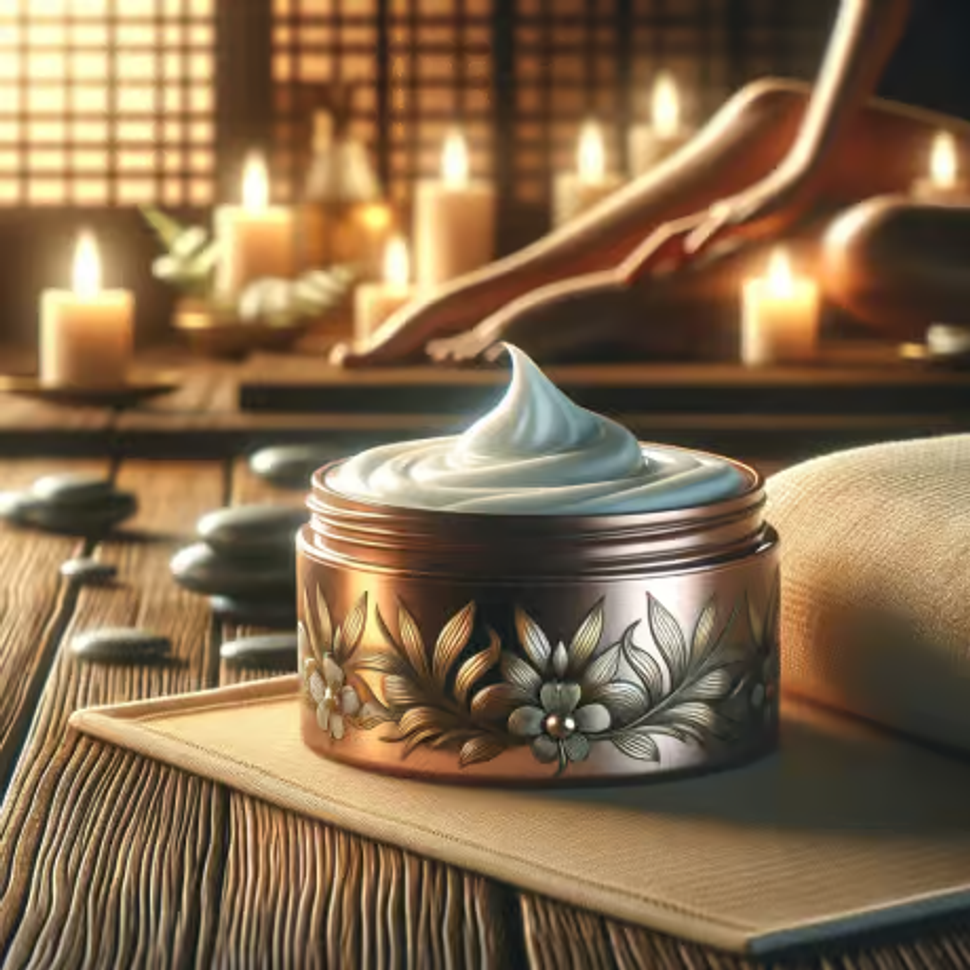
Exploring Massage Cream: Types and Uses
Posted by The MassageTools Team on Mar 19th 2024
In the realm of massage therapy, the choice of cream plays a pivotal role in enhancing the overall experience for both the practitioner and the client. With a myriad of options available, understanding the types and uses of massage cream is essential for optimizing the therapeutic benefits. From face creams tailored for delicate facial massages to CBD-infused formulations for targeted relief, each variant offers unique advantages suited to specific needs.
Table of Contents
Understanding Different Types of Massage Cream
Face Creams for Massage
Facial massage creams are meticulously crafted to cater to the delicate skin on the face, offering hydration and nourishment while facilitating gentle yet effective manipulation on a comfortable med spa chair. These formulations are designed to absorb easily into the skin, promoting relaxation and rejuvenation during facial treatments.
CBD Massage Cream: Harnessing the Power of Cannabinoids
In recent years, CBD-infused massage creams have surged in popularity, thanks to their potential therapeutic benefits. According to a study published in the Journal of Pain Research, CBD exhibits anti-inflammatory properties, making it a promising ingredient for alleviating muscle tension and discomfort. Spa professionals and massage therapists are increasingly incorporating CBD creams into their practice to enhance the therapeutic effects of their treatments. With its analgesic properties, CBD massage creams offer a holistic approach to pain relief and relaxation.
Exploring Versatile Applications

Body Massage Cream: Versatility in Practice
When it comes to body massage, selecting the right cream can significantly impact the overall experience. Whether aiming for deep tissue work or relaxation, the texture and ingredients of the massage cream play a crucial role. Massage Magazine suggests that “for deep tissue massages, opt for creams with a thicker consistency to provide ample glide and traction.” Conversely, lighter formulations are ideal for Swedish or relaxation massages, allowing for effortless manipulation and absorption into the skin.
Best Massage Cream: A Personalized Approach
Choosing the best massage cream ultimately boils down to individual preferences and treatment goals. However, we cannot stress enough the importance of selecting creams free from parabens, artificial fragrances, and harsh chemicals to ensure compatibility with a wide range of clients. Additionally, incorporating client feedback and preferences into the selection process can further enhance the overall massage experience, fostering trust and satisfaction.
Mastering Best Practices for Massage Therapists
Client Consultation and Assessment
Before initiating any massage session, conducting a thorough client consultation is paramount. By gathering information on medical history, current health conditions, and specific concerns or preferences, therapists can tailor treatments to meet individual needs effectively.
Technique Proficiency and Adaptability
A skilled massage therapist possesses a diverse repertoire of techniques and modalities to address varying client needs, whether working from a treatment chair or other professional equipment. Continuously honing their craft through ongoing education and training enables therapists to stay abreast of emerging trends and refine their skills. Moreover, the ability to adapt techniques based on client feedback and physical cues ensures a customized approach that maximizes therapeutic benefits and minimizes discomfort.
Maintaining Professional Boundaries and Ethics
Maintaining professional boundaries and adhering to ethical guidelines are integral aspects of the massage therapy profession. AMTA (American Massage Therapy Association) emphasizes the importance of maintaining confidentiality, respecting client autonomy, and upholding professional standards of conduct at all times. By prioritizing integrity and professionalism, therapists cultivate trust and credibility within the industry and foster long-term client relationships.
Self-Care and Wellness Practices
Caring for oneself is just as crucial as caring for clients. Prioritizing self-care practices such as regular exercise, proper nutrition, and adequate rest helps prevent burnout and sustain longevity in the profession. Massage & Bodywork Magazine advocates for incorporating self-massage techniques, stretching exercises, and mindfulness practices into daily routines to alleviate physical strain and promote overall well-being.
Continued Education and Professional Development
The field of massage therapy is ever-evolving, with new research and techniques continually emerging. Engaging in continued education and professional development opportunities not only enhances clinical skills but also expands knowledge in related areas such as anatomy, physiology, and holistic wellness. By staying informed and proactive in their learning journey, massage therapists can deliver high-quality care and remain at the forefront of their profession.
Building Strong Referral Networks
Collaborating with other healthcare professionals and wellness practitioners fosters a holistic approach to client care and expands the reach of massage therapy services. By establishing strong referral networks with chiropractors, physical therapists, and alternative medicine practitioners, therapists can provide comprehensive care that addresses the diverse needs of their clientele. Additionally, nurturing relationships with existing clients through exceptional service and personalized care often leads to word-of-mouth referrals, driving business growth and success.
In summary, mastering best practices for massage therapists involves a multifaceted approach that encompasses client communication, technical proficiency, ethical conduct, self-care, professional development, and collaborative networking. By embracing these principles, therapists can elevate their practice, enhance client outcomes, and contribute to the overall well-being of their community.
Understanding Allergies and Ingredients in Massage Products
Identifying Common Allergens
Allergic reactions to massage products can stem from various ingredients commonly found in creams, oils, and lotions. Common allergens include nut oils (such as almond or walnut), fragrances, lanolin, and certain botanical extracts. These allergens can trigger skin reactions ranging from mild irritation to severe dermatitis in sensitive individuals.
Reading Labels and Product Knowledge
To mitigate the risk of allergic reactions, massage therapists must diligently read product labels and familiarize themselves with ingredient lists. Therapists should thoroughly assess product formulations for potential allergens and opt for hypoallergenic or fragrance-free options whenever possible. Additionally, maintaining up-to-date knowledge of common allergens and their derivatives empowers therapists to make informed decisions and safeguard client safety.
Client Consultation and Patch Testing
Prior to administering any massage treatment on a professional electric massage table, conducting a comprehensive client consultation is essential for identifying potential allergies or sensitivities. Incorporating a thorough health history assessment, including past allergic reactions and known sensitivities, into the consultation process. Furthermore, performing a patch test on a small area of the skin can help assess individual tolerance to specific ingredients and minimize the risk of adverse reactions during the massage session.
Allergen-Free Alternatives and Customization
In cases where clients have known allergies or sensitivities, therapists should prioritize allergen-free alternatives and customize treatment formulations accordingly. Incorporating client preferences and restrictions into product selection, opting for hypoallergenic, fragrance-free, or organic options as needed. By tailoring treatments to accommodate individual needs, therapists can ensure a safe and comfortable experience for all clients.
Communication and Risk Management
Clear communication between the therapist and client is essential for mitigating the risk of allergic reactions and addressing any concerns or uncertainties. It’s important to establish an open dialogue regarding potential allergens, product ingredients, and alternative options. Additionally, having protocols in place for managing allergic reactions, such as access to antihistamines or emergency medical assistance, enhances client safety and confidence in the therapist’s expertise.
Wrapping Up
In essence, the diverse array of massage creams available caters to the unique needs and preferences of both practitioners and clients alike. From specialized face creams to versatile body formulations, each variant offers a distinct set of benefits designed to elevate the therapeutic experience. By understanding the types and uses of massage cream, professionals in the beauty and spa industry can optimize their practice and deliver unparalleled results.



